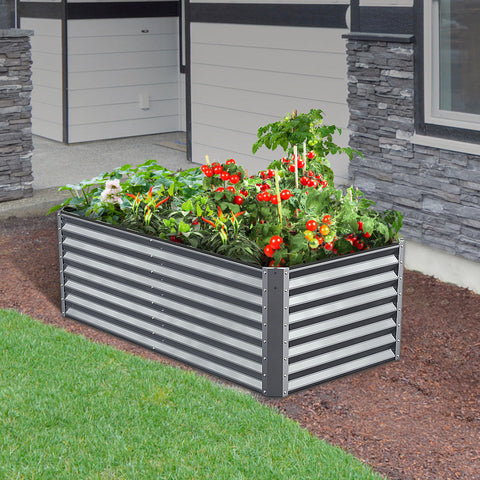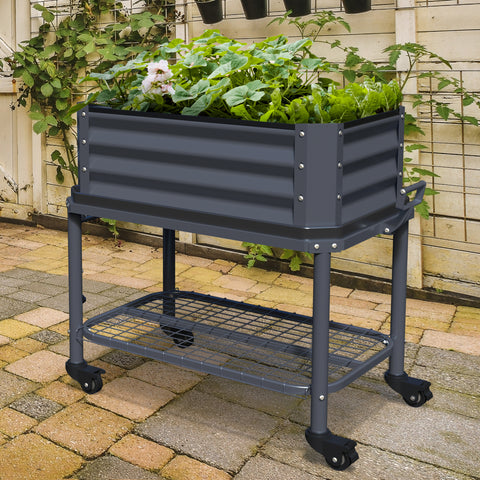Although tomatoes are considered to be one of the easiest plants to grow, there are many issues with tomato growing that must be addressed if you want to enjoy these red beauties. From almost invisible bacteria to creepy little bugs, there are countless diseases and pests waiting to turn your tomatoes into snacks.The following content also has some reference value for raised garden beds.
Despite nature's best efforts to ruin your hard work, there is always a solution to the problem for the diligent gardener.
The larva of the tomato moth
Tomato hornworms are large caterpillar-like bugs that eat the stems, leaves, and fruits of your tomato plant and then move on to the next plant! Although they are large, they are easy to miss due to their light green color, but as soon as they start devouring and destroying your tomato plants, you will know they are there.
Because earthworms are so large, the easiest way to care for them is to rip them off and throw them into a closed container or bucket.

If a more effective solution is needed, Bacillus thuringiensis (BT) sprays are effective at killing earthworms in their larval stage and can be safely used on food crops. Using a rototiller before planting also helps to eliminate hornworm larvae before they become a nuisance.
These pesky pests not only eat tomatoes, but also attack eggplants, potatoes, and peppers, so check your vegetables carefully!
Other tomato pests
Besides earthworms, there are several other pests that can wreak havoc on your tomato plants. Aphids and roundworms like to make your delicate tomatoes their home.
Aphids are tiny green bugs that slowly devour your tomatoes. Although it's hard to see, you'll notice some small holes that seem to get bigger over the course of a week or so. Eventually, this will kill the plant.
Aphids are abundant, but because of their light green color, they mix easily. The first step to stopping the aphid invasion is to remove the leaves where the aphid have gathered and then throw them into a closed container.
If the aphids have spread beyond a few leaves, your best bet is to spray a mixture of water, liquid dish soap, and canola oil. The solution is not harmful to plants, but it makes it difficult for aphids to breathe.

Another innovative aphid treatment is ladybug! While we may think of ladybugs as harmless little bugs, they are actually the number one predator of aphids.
Cutworms are tiny gray worms that nibble on the stems and leaves of tomatoes. Worst of all, they eat at night, so you may not know they're there until it's too late. Check the stems and leaves of your plants at night, and if there is damage, it is time to take action.
A simple and ingenious solution is a worm collar. Use tin foil or cardboard to make a 4-inch circular barrier that extends all the way to the roots of your tomato. Bury it an inch or so into the ground, which will prevent earthworms from climbing up. If it's too late, spray the ground and the main stem of the tomato. A little diatomaceous earth sprinkled on the soil can also kill nematodes.
Tomato rot
You've been working hard to grow tomatoes all summer, and just as you're about to pick them, you see -- a moldy black hole! Tomato rot (also known as flower end rot) is one of the most common tomato plant problems and one of the most devastating.
Although it may not seem obvious, the number one cause of tomato rot is calcium deficiency. Like humans, plants need calcium to survive. When a fruit or vegetable lacks calcium, its tissues break down, leading to decay. Too much ammonium sulfate in fertilizer, too much watering, and too little phosphorus can lead to calcium deficiency.
You can enrich your vegetable garden with organic compost, especially eggshells to keep tomatoes from rotting. Bone meal is also a great source of calcium. However, once the tomato appears to rot, there is no going back and the tomato is not good.

Tomato wilt
There's nothing like a dead plant to signal that something is wrong. Tomato wilt is one of the most serious problems with tomatoes and usually means the end of the plant. You'll know it when you see it-your tomato plant will sag lazily, as if it were made of rubber bands. Several factors can cause tomatoes to wilt, such as over-watering, lack of water, or infection.
It's hard to tell if you're watering your tomatoes too much or not enough, because the signs and symptoms are pretty much the same. In general, tomato plants need about 1 inch of water per week. Another test is to gently squeeze stems and real tomatoes. If they are soft and soft, you may have watered them too much.
Once the blight has set in, there is nothing left to do but pull the plant out and throw it in a trash can or closed container.









